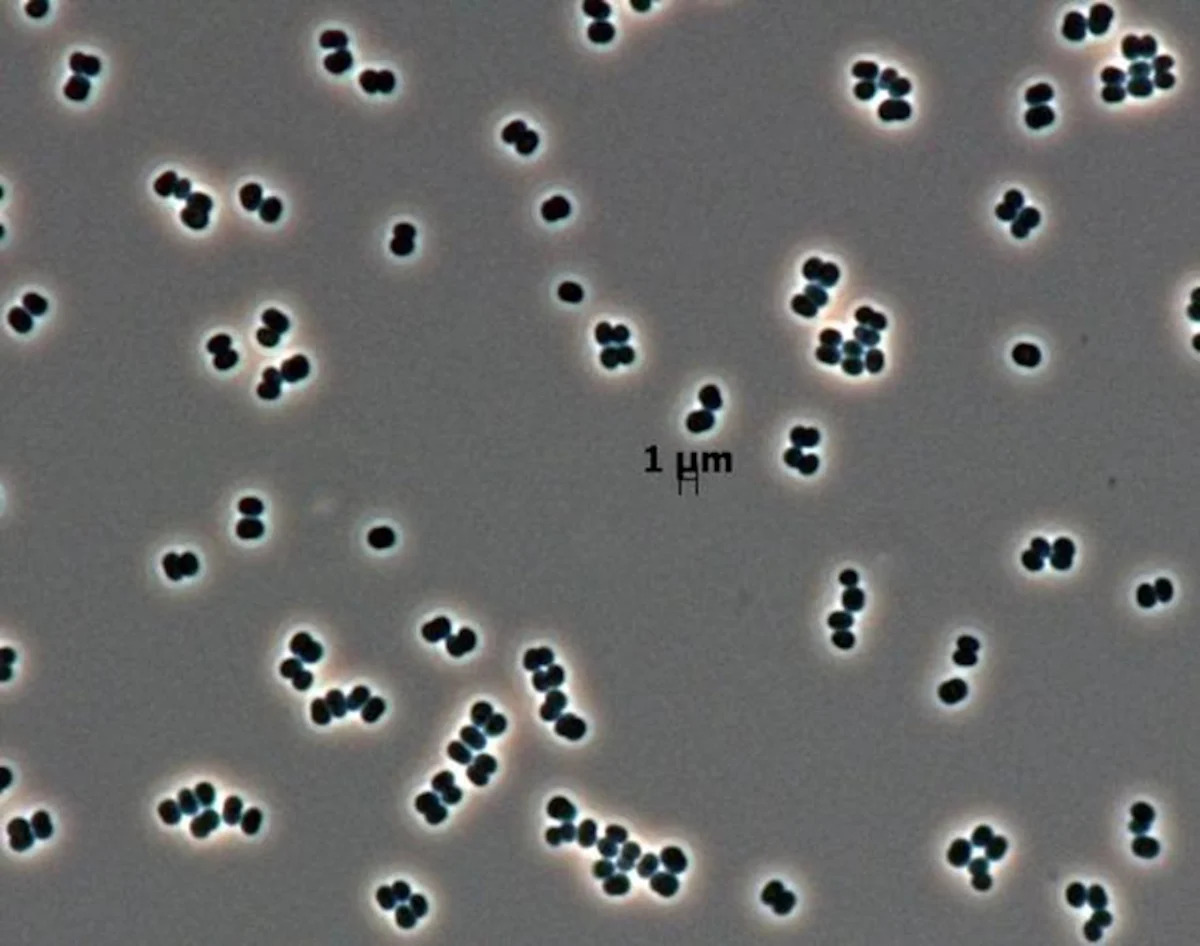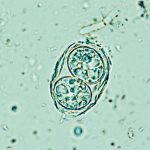To build a spacecraft, you need an extremely clean construction zone. That’s essential if you’re sending a robot to another world to search for signs of microscopic alien life. One wouldn’t want to mistake a stowaway for the first evidence of extraterrestrials. It’s also vital if you want to protect humans from potentially dangerous microbes on long-term trips to space—up to the International Space Station, to the Moon, or to Mars.
That’s why spacecraft are often built in clean rooms, some of the most sterile environments on Earth. But a decade ago, scientists were shocked to discover a brand-new type of bacteria had invaded not just one spacecraft clean room, but two—thousands of miles apart.
That bacterium, Tersicoccus phoenicis, turned out to be harmless. But it was a cause for concern: It had clearly been present for some time prior to its discovery, and yet it somehow had managed to evade detection and escape rigorous sterilization protocols. How did it go incognito?
In a recent study published in the journal Microbiology Spectrum, scientists have now worked out this sneaky bacterium’s secret: T. phoenicis can enter a state of deep hibernation—one that prevents scientists from detecting its presence. “It is not dead. It was playing dead,” says Madhan Tirumalai, a microbiologist at the University of Houston and one of the study’s authors. “It is only dormant.”
Since the discovery of T. phoenicis, more mysterious microbes have turned up in space agency clean rooms, and others still to be undiscovered could be hiding there. “A bunch of them could be problematic,” says William Widger, a biologist and biochemist at the University of Houston and another author of the study.
(How NASA’s Cassini spacecraft met its fiery end.)
Clean room extremists
Many spacecraft don’t need to be perfectly clean; a space-based telescope designed to study distant planets or look for near-Earth asteroids, for example, are built by engineers wearing dust-trapping, all-covering “bunny suits.” But one errant dust grain, or scattered bacteria, won’t derail these missions.
But if you’re making a rover that is hoping to search for extraterrestrial microbes, you don’t want Earth’s own microbes hitching a ride. Astronauts heading to space also want to avoid encountering disease-causing bacteria, fungi and viruses too. As such, certain clean rooms are made, well, tremendously clean.
Air filters continuously reduce dirt and dust, while slightly higher air pressures in the labs ensure air is always flowing out rather than inward. Biocidal fluids, ultraviolet lights, radioactive beams and microbe-murdering gases are used to keep surfaces sterile. Prolonged periods of dry heating just above water’s boiling point removes nutrient-filled watery micro-environments.
Despite these efforts, even when there’s nothing for them to eat, and even when they’re being attacked with a variety of life-killing tools, some microbes can still escape death.
Surviving and thriving in clean rooms
In fact, the harshness of clean rooms might encourage microbes to develop new survival tricks. So space agencies frequently survey clean rooms for microbes, swabbing surfaces and then placing the samples into nutrient-rich broths to see if any cells spawn. In some cases, even if cells don’t grow, samples are checked to see if any remnant genetic material from any inactive or dead microorganisms can be found.
In the past few years, hundreds of kinds of bacteria—including many previously unknown to science—have been found in NASA’s and ESA’s most thoroughly scrubbed spacecraft assembly and testing rooms. Just this year, scientists identified 26 new bacteria from swabs of two spacecraft clean rooms.
“There’s still a diverse microbiome even in clean rooms, and on spacecraft,” says Nils Averesch, a space biologist at the University of Florida who was not involved with the recent study. Microbes have even been found on the outside of the International Space Station, exposed to the excessively hostile nature of space itself.
Some have survived by consuming the cleaning products that are supposed to be maiming them. Others can persist by developing spores: tough biological structures that act as shields. In spore form, bacteria “can remain [inert] for millions of years until they find the right conditions to germinate again,” says Tirumalai.
Another option is to go dormant. “They are sneaky guys. They’re in a sleep mode,” says Tirumalai. Many bacterial species reawaken from dormancy when they are given nutrients again. And when that happens, scientists can take swabs of them and grow them to detectable levels in a lab.
But some dormant bacteria remain silent and inactive even when given food. This version of dormancy means that they can remain hidden. “They take swabs, them put them on culture plates. And they don’t grow,” says Widger. And that could pose a real problem.
T. phoenicis falls into this last category.
Rise of the tiny phoenix
In 2007, engineers preparing NASA’s Phoenix Mars lander swabbed the floor of its assembly clean room at NASA’s Kennedy Space Center in Florida. Thanks to those swabs (along with testing for traces of DNA), scientists announced in 2013 that they had identified and detected the new bacterium, T. phoenicis, both at Kennedy and at the European Space Agency’s clean room in French Guiana 2,500 miles away. It marked the first time a new microbe had been found in two distant clean rooms.
Scientists first examined its genome for clues to how the bug had persisted for so long in disparate sterile environments. They found that it carried the gene for a protein known as a resuscitation-promoting factor, or Rpf, that can wake up similar bacteria that also have the same gene.
Having this gene doesn’t necessarily mean a bacterium takes advantage of it. To find out, Tirumalai’s team deprived T. phoenicis of all nutrients and dehydrated it to the point of desiccation. The cells hastily entered a dormant state. In many cases, the bacteria failed to exit dormancy and regrow when given nutrients. In some cases, cells grew in clusters in nutrient-rich pools, but this took several days.
Their ability to enter a near-undetectable dormant state, and remain that way even when conditions improved, explained why surveys took so long to discover them in spacecraft clean rooms. “But the moment you add the Rpf to it: boom,” says Tirumalai. “It needs Rpf to revive it.”
Rpf isn’t a natural feature of clean rooms. But various bacteria secrete it, including a particularly common species that lives on human skin. That makes Rpf easy to find everywhere else. “You have it. I have it,” says Widger. With Rpf being so ubiquitous, any T. phoenicis clinging onto a super-clean spacecraft wouldn’t have any trouble waking up and feasting following a lengthy period of dormancy.
Does this mean we sent microbes to Mars?
Whether that level of dormancy could save T. phoenicis from the harshness of deep space is an open question, but unlikely. The Phoenix lander has long departed Earth to search for ancient water and organic molecules in the Martian arctic. And the changes of bacteria surviving the Martian surface are even lower. (Any future discoveries of alien microbes would be double-checked against the census of those from clean rooms).
The bigger issue is the clean rooms themselves and the humans that work in them. T. phoenicis is a warning for not just spacecraft clean rooms, but any clean rooms—from those in agriculture and food production labs to those used by pharmaceutical companies and within hospitals. “Dormancy doesn’t just have implications from planetary protection, but also for human environments,” says Tirumalai.
Disease-causing bacteria able to enter a similar stealth mode to T. phoenicis in any of these supposedly sterile rooms could cause havoc. So far, scientists aren’t aware of any problematic microbes like this. But then again, that might be because they haven’t been able to detect them. “What’s unknown is scarier than known,” says Widger.
Fighting back against sneaky microbes
The team’s study points to testing more surfaces for traces of genetic material from camouflaged microbes. Another, more counterintuitive way to spy stealthy clean room bacteria is to keep them from slumbering in the first place. Rpf reawakens T. phoenicis, allowing it to be detected and then easily killed. If scientists found out the key to reawakening similar bacteria, “then the antibiotics that would normally kill it would kill it,” says Widger.
Short-haul flights into space are unlikely to be imperiled by sneaky microbes; after all, astronauts aboard the International Space Station haven’t come down with any serious infectious diseases while up there.
On long-term human spaceflight missions to the Moon or Mars, astronauts will undergo lengthy periods of quarantine. That ensures that any infectious diseases they may be incubating at the time can be detected prior to launch. But that doesn’t mean that any stealthy microbes won’t be waiting for them within the spaceships themselves.
(What toll does spaceflight take on astronauts?)
Going dormant is also not the only way microorganisms can evade detection. Scientists recently subjected certain bacteria to Mars-like environmental conditions, and found that this causes them to change their shapes and biological behaviors. Space travel has also been shown to befuddle the immune systems of astronauts. And a combination of the two could mean that our own biological defenses are less capable of detecting, and killing, any bacterial invaders.
Anyone hoping to set up a sustained presence on the lunar surface, or on Mars, it would be prudent not to underestimate the bacterial kingdom. An offworld base is going to need food. “And if you bring plants, you’re bringing a whole bunch of microbes,” says Averesch. Hopefully, they’re the friendly kind.
First Appeared on
Source link













